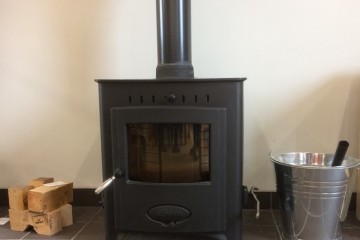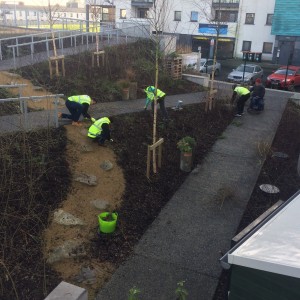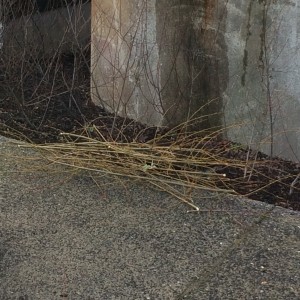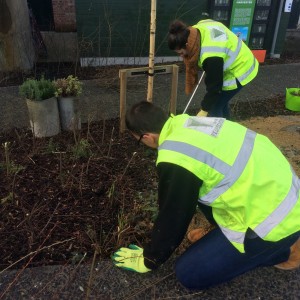
Posted on 3rd February 2018
This week, the Rediscovery Centre team has been working outdoors, tending to the willow trees in the garden.
Willow is a short-rotation crop that grows very quickly. If willow is ‘coppiced’ – cut down as near to ground level as possible – it will quickly regrow new and stronger shoots from the remaining stump. Willow and other coppice crops such as ash, alder or beech can thus be encouraged to renew themselves over predictable periods, while at the same time providing wood that can be used for a variety of different purposes.
The willow the team has cut down this week will first of all be used to make wood pellets for the Rediscovery Centre’s onsite composter. The remainder will be fed into the building’s Biomass Stove, where the energy generated through burning it can be used to provide hot water throughout the building and heat for the main hall.
Bioenergy – the process of using biological materials to generate heat or light – has a number of advantages over standard modern energy generation methods. Unlike oil or natural gas, for instance, it is renewable and sustainable – reducing pressure on finite natural resources. Working as a fossil fuel ‘substitute’ in this way, it also helps with the reduction of greenhouse gas emissions. Bioenergy generation is also replicable at domestic and community levels.


